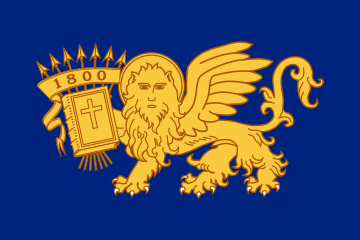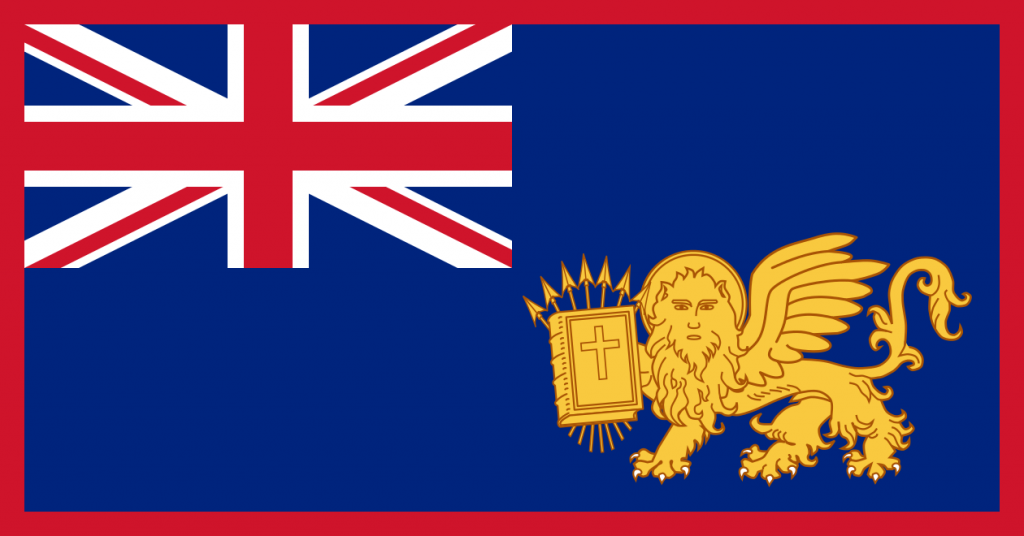The Republic of the Seven Islands April 19, 2016
Author: Beach Combing | in : Modern , trackback
A thalassocracy is a sea power, a realm built around the sea. The word is sometimes used to refer to maritime superpowers, like the British and French empires, but is more typically employed for chains of islands governed by a single king or council. Historical examples include Tondo; or some of the Viking polities from Mann to the Greenland settlements. However, one other, and little known example was the glorious seven year Septinsular Republic.
The Septinsular Republic or the Republic of the Seven Isles was founded in 1800 in the Adriatic. Its birth parents were the Ottoman Empire, who allowed the Septinsular Republic to exist as a tributary state; and the Russians who became the protectors of the newborn – partly to keep the Ottomans from inching further west in the Mediterranean, partly out of a genuine concern for their Orthodox co-religionists.
The seven islands were: Corfu, Paxos, Lefkada, Cefalonia, Ithaca, Zante and Kythira. Most had been Venetian possessions for four hundred years, up until a brief French interlude in the late eighteenth century. The French administered the islands, with some initial popular acclaim, until 1800 when they were lost in Napoleon’s first collapse. It was then that Russia and the Ottomans compromised with their uncharacteristic generosity in allowing a Republic to be founded.
The population of the Septinsular Republic proved an attractive mix of Greek and Italian: on Cefalonia particularly the Venetian centuries had left their mark. Likewise in religious matters, the majority of the population was Orthodox, but there were important Catholic and Jewish minorities. Of course, multicultural dreams were just that in nineteenth-century Europe: the different groups rubbed along, but there was also unrest, violence and murder in a Republic that resembled a survivalist’s dream rather than the Serenissima.
The flag of the Republic is perhaps the most moving part of the entire arrangement. Four years before Napoleon had promised to be Venice’s Attila and had destroyed one of ‘the great work’s of time’. The inhabitants of the seven isles had originally been happy: some had burnt the Golden Book, Venice’s genealogical constitution, when French soldiers arrived. Yet when, in 1800 the Republic was founded, Venice was remembered more fondly and Venice’s Lion returned from the dead in a peculiarly Greek and ‘modern’ form.
Perhaps even the Ottomans were glad to see their old fond enemy, the Lion of St Mark, on a flag pole, albeit neutered. The Republic itself survived until 1807 when it was signed away by the Russians to the French. The British subsequently occupied the islands and created the United States of the Ionian Islands as a British protectorate, cue another fabulous flag, until 1864, when the British gifted the territory to a renascent Greece.
Just to think the Venetian Lion with the Union Jack. Down what strange roads history leads us…

Beach is always looking for forgotten kingdoms or republics: drbeachcombing At yahoo DOT com


